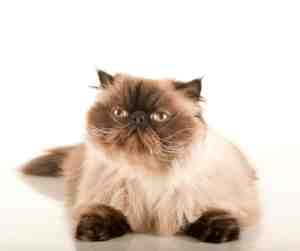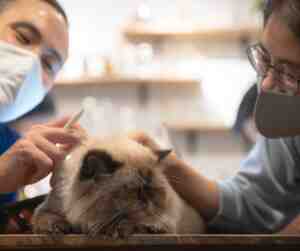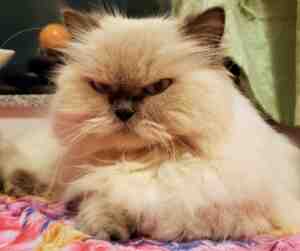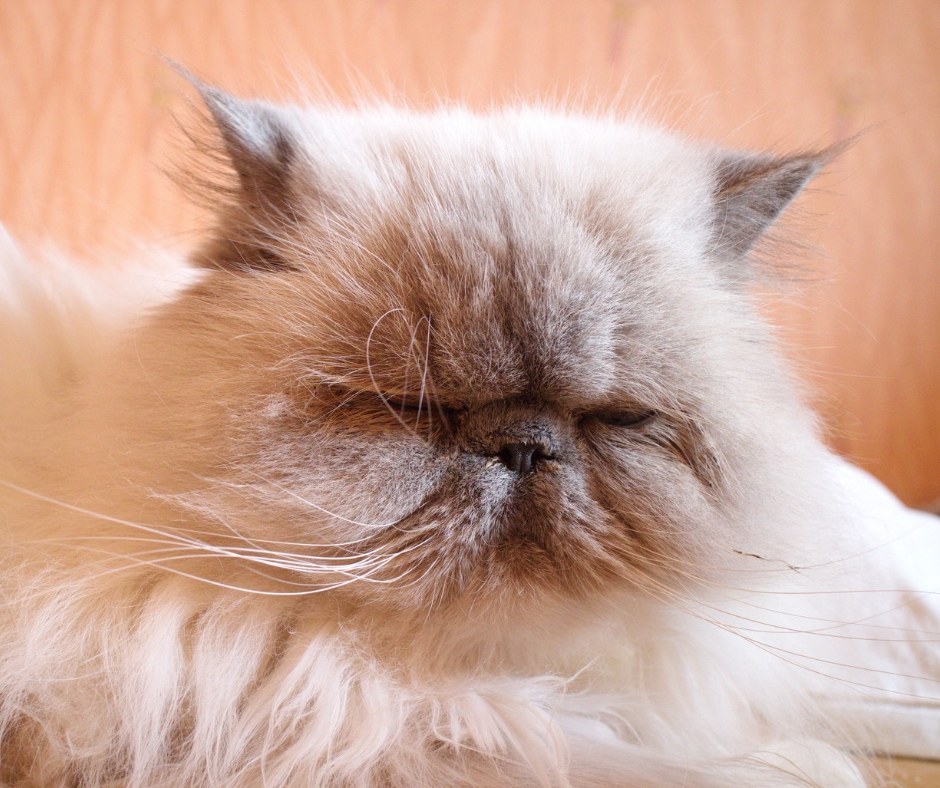Known for their striking beauty and sweet disposition, Himalayan Cats stand out in the feline world with their unique appearance and lovable personality.
This breed, often referred to as the “Himmy” for short, is a delightful fusion of the Persian‘s charm and the Siamese’s vibrant color points. But there’s more to these cats than just their good looks. Let’s dive into the captivating world of the Himalayan Cats.
Himalayan Cat History
The Himalayan cat, also known as the Himmie, is a breed that was created in the United States in the 20th century. This breed is a perfect blend of two popular breeds, the Persian and the Siamese. The goal was to create a cat with the long hair and body type of the Persian, but with the color points of the Siamese.
The first attempt to create the Himalayan cat occurred in the 1920s and 1930s. However, these early attempts were unsuccessful because the breeders did not yet fully understand the genetics involved in producing a long-haired cat with color points. The true development of the breed did not begin until the 1950s.
In 1950, Dr. Clyde Keeler and Virginia Cobb, a geneticist, and a cat breeder respectively, embarked on a breeding program to produce a Persian type cat with Siamese coloring. Their first successful Himalayan kitten, named Newton’s Debutante, was born in 1955. The breed was named “Himalayan” because its color points, similar to those found on Siamese cats, are also found on animals like the Himalayan rabbit and the black bear of the Himalayas.
In 1957, the first Himalayans were registered with the Cat Fanciers’ Federation. However, this breed was not immediately recognized by all cat registries. It took until 1984 for the Cat Fancier’s Association (CFA) to grant the Himalayan Championship status. In fact, some registries, such as The International Cat Association (TICA), categorize the Himalayan as a type of Persian.
Today, the Himalayan is one of the most popular cat breeds in the United States. They are known for their striking appearance, affectionate personality, and gentle demeanor. Despite their long hair, they are also relatively easy to groom. However, potential owners should be aware that, like their Persian ancestors, Himalayans are prone to certain health problems, including breathing difficulties and eye conditions.
Overall, the Himalayan cat breed has a rich history that combines the best traits of two beloved breeds. Its distinctive look and sweet nature have made it a favorite among cat lovers around the world.
The history of the Himalayan Cat traces back to the 1930s when British and American breeders began crossing Persian cats with Siamese cats. The intent was to blend the Persian’s luxurious coat and body type with the Siamese’s dazzling color points.
After decades of selective breeding, the Himalayan was recognized as a distinct breed in the 1950s. However, in some associations, it is still considered a color variant of the Persian.
Himalayan Cat Appearance

Himalayans are medium-to-large cats, typically weighing between 9 and 15 pounds, with males being slightly larger than females. They inherit the Persian’s robust body, short legs, and round face with a snub nose.
Their most defining feature is their long, silky coat that comes in a variety of color points, reminiscent of the Siamese. These points, darker than the rest of the body, typically appear on the face, ears, paws, and tail.
Temperament and Behavior of Himalayans
Himalayan Cats are known for their gentle, calm disposition. They are not as active as some cat breeds but do enjoy a playful romp now and then.
They are affectionate cats that enjoy the company of their human companions, often following them around the house. Despite their quiet nature, Himalayans are also quite communicative, frequently expressing their desires through soft, sweet meows.
Himalayan Cat Care, Nutrition and Feeding
Caring for a Himalayan cat requires a commitment to their dietary needs and grooming routine. They typically thrive on high-quality, protein-rich cat food. However, due to their brachycephalic (short-nosed) faces, they may have difficulty eating certain types of food, so a diet of wet food or kibble tailored to their needs can be beneficial.
Fresh water should always be readily available to support their overall health.
Grooming, Exercise and Enrichment
Himalayans require daily grooming to keep their long, luxurious coats mat-free and lustrous. Regular brushing also helps reduce hairballs.
Exercise is equally important for these cats. Although not overly active, they do enjoy interactive toys and games that stimulate their mind and body. Providing climbing trees and scratching posts will also help meet their instinctual needs.
Routine Veterinary Care and Himmy Health Concerns

Regular veterinary check-ups are vital to maintain a Himalayan cat’s health. They are prone to certain health issues, including polycystic kidney disease (PKD), breathing difficulties due to their short noses, and dental problems.
Regular dental care, including brushing and professional cleanings, can help prevent dental diseases.
Is a Himalayan cat the right choice for your family?

Himalayan Cats are perfect for those looking for a low-energy, affectionate pet. They make wonderful companions for families, singles, and seniors, and are generally good with other pets.
However, prospective owners should be prepared for their grooming needs and potential health concerns.
Himalayan Cats, with their striking beauty and gentle temperament, make loving and loyal companions. Their care, while somewhat demanding, is a rewarding endeavor that strengthens the bond between the owner and the cat. These majestic creatures enrich our lives, adding a touch of luxury and warmth to our homes.
Additional Resources:
1. Cat Fanciers’ Association (CFA) – https://cfa.org/himalayan/
2. The International Cat Association (TICA)The International Cat Association (TICA) – https://tica.org/
3. American Cat Fanciers Association –
4. PetMD – https://www.petmd.com/cat/breeds
5. VetStreet – http://www.vetstreet.com/cats/himalayan

